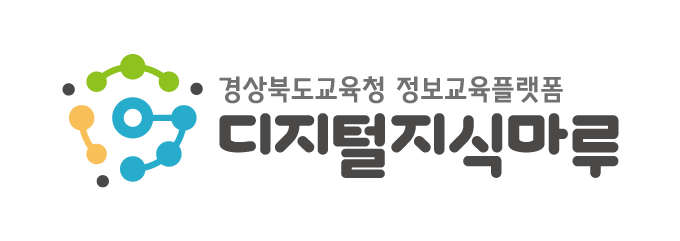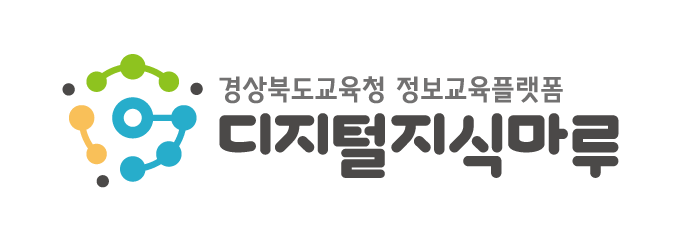강의소개
이 과정은 인공 지능 분야의 Microsoft 전문 프로그램의 일부입니다.
기계 학습은 컴퓨터를 사용하여 기존 데이터에서 학습하는 예측 모델을 실행하여 미래의 행동, 결과 및 추세를 예측합니다. 딥러닝은 기계 학습의 하위 분야로, 우리의 뇌가 작동하는 방식에서 영감을받은 모델이 수학적으로 표현되고 수천에서 1억개 이상의 수학적 모델을 정의하는 매개변수가 자동으로 학습됩니다.
딥러닝은 전 세계에서 개발되고있는 AI 기반 기술의 핵심 요소입니다. 이 딥러닝 과정에서는 기계가 인간과 같은 지능으로 실제 문제를 해결하는 데 도움이되는 복잡한 모델을 구축하는 직관적 인 접근 방식을 배웁니다. 직관적인 접근 방식은 실제 문제와 실습 경험이있는 작업 코드로 변환됩니다. 로컬 Windows 또는 Linux 머신 또는 Azure에서 실행되는 가상 머신에서 실행되는 Python Jupyter 노트북을 사용하여 이러한 모델에서 인사이트를 구축하고 도출하는 방법을 배웁니다. 또는 Microsoft Azure Notebooks 플랫폼을 무료로 활용할 수 있습니다.
이 과정은 엔지니어 / 데이터 과학자 / 기술 관리자가이 게임 변화 기술의 핵심 개념에 대한 직관적인 이해를 개발하는데 필요한 세부 수준을 제공합니다. 동시에 레고와 같은 유연성으로 엔드 투 엔드 딥 러닝 모델을 구축하는 데 사용할 수있는 간단하면서도 강력한 "모티프"를 배우게됩니다. 이전에 CNTK로 알려진 Microsoft Cognitive Toolkit을 사용하여 타협하지 않는 확장성, 속도 및 정확성으로 딥러닝을 통해 대규모 데이터 세트내에서 지식을 활용하는 방법을 배웁니다.
강사소개
Jonathan Sanito
수석 콘텐츠 개발자
Microsoft
Jonathan은 데이터 및 분석 온라인 교육에 주력하는 Microsoft의 콘텐츠 개발자 및 프로젝트 관리자로 일하고 있습니다. 그는 Microsoft Dynamics NAV에서 Windows Active Directory에 이르기까지 개발자 및 IT 전문가 대상 교육에 참여했습니다.
Microsoft에 오기 전에 Jonathan은 Microsoft 파트너의 컨설턴트로 일하면서 Microsoft Dynamics NAV 솔루션을 구현했습니다.
Sayan Pathak PhD.
CNTK 팀 수석 ML 과학자 및 AI 학교 강사
Microsoft
Sayan은 Microsoft CNTK 팀의 수석 엔지니어이자 기계학습 과학자입니다. 그는 의료 영상, 신경 과학, 컴퓨터 광고 및 소셜 네트워크 도메인에 적용되는 빅 데이터 문제에 대한 최첨단 컴퓨터 비전 및 머신 러닝 기술을 출판하고 상용화했습니다. Microsoft에 입사하기 전에는 Allen Institute for Brain Science에서 근무했습니다. 그는 여러 스타트업의 컨설턴트이자 여러 미국 국립 보건원 (NIH) 보조금에 대한 수석 조사관이었습니다. 그는 워싱턴 대학교에서 15 년 동안 교수로 재직하고 있으며 4년 이상 인도 카라 그 푸르에있는 인도 공과 대학의 CSE 부교수입니다. 그는 학부 및 대학원 수준에서 여러 과정 (즉, 이미지 컴퓨팅 시스템, 정보 검색, 소셜 네트워크, 기계 학습)을 가르쳤습니다. 그는 여러 박사 및 석사 학생들의위원회에서 봉사했습니다.
Roland Fernandez
딥 러닝 테크놀로지 센터 선임 연구원 겸 AI 학교 강사
Microsoft Research AI
Roland는 Microsoft Research AI의 Deep Learning Technology Center에서 연구원 및 AI School 강사로 일하고 있습니다. 그의 관심 분야는 강화 학습, 자율적 멀티 태스킹 학습, 상징적 표현, AI 교육, 정보 시각화 및 HCI입니다. DLTC에 오기 전에 Roland는 시각화 및 HCI 프로젝트, 특히 SandDance 프로젝트를 수행하는 MSR의 VIBE 그룹에서 일했습니다. MSR 이전에 Roland는 자연 사용자 인터페이스, 활동 기반 컴퓨팅, 고급 프로토 타이핑, 프로그래머 도구, 운영 체제 및 데이터베이스 영역에서 Microsoft 및 기타 회사에서 근무했습니다.
About this course
This course is part of the Microsoft Professional Program in Artificial Intelligence.
Machine learning uses computers to run predictive models that learn from existing data to forecast future behaviors, outcomes, and trends. Deep learning is a sub-field of machine learning, where models inspired by how our brain works are expressed mathematically, and the parameters defining the mathematical models, which can be in the order of few thousands to 100+ million, are learned automatically from the data.
Deep learning is a key enabler of AI powered technologies being developed across the globe. In this deep learning course, you will learn an intuitive approach to building complex models that help machines solve real-world problems with human-like intelligence. The intuitive approaches will be translated into working code with practical problems and hands-on experience. You will learn how to build and derive insights from these models using Python Jupyter notebooks running on your local Windows or Linux machine, or on a virtual machine running on Azure. Alternatively, you can leverage the Microsoft Azure Notebooks platform for free.
This course provides the level of detail needed to enable engineers / data scientists / technology managers to develop an intuitive understanding of the key concepts behind this game changing technology. At the same time, you will learn simple yet powerful “motifs” that can be used with lego-like flexibility to build an end-to-end deep learning model. You will learn how to use the Microsoft Cognitive Toolkit — previously known as CNTK — to harness the intelligence within massive datasets through deep learning with uncompromised scaling, speed, and accuracy.
Prerequisites
- Basic programming skills
- Working knowledge of data science
- Skills equivalent to the following courses:
- DAT203x: Data Science Essentials
- DAT208x: Introduction to Python for Data Science
What you'll learn
- The components of a deep neural network and how they work together
- The basic types of deep neural networks (MLP, CNN, RNN, LSTM) and the type of data each is designed for
- A working knowledge of vocabulary, concepts, and algorithms used in deep learning
- How to build:
- An end-to-end model for recognizing hand-written digit images, using a multi-class Logistic Regression and MLP (Multi-Layered Perceptron)
- A CNN (Convolution Neural Network) model for improved digit recognition
- An RNN (Recurrent Neural Network) model to forecast time-series data
- An LSTM (Long Short Term Memory) model to process sequential text data
Course Syllabus
Week 1:Introduction to deep learning and a quick recap of machine learning concepts.
Week 2:Building a simple multi-class classification model using logistic regression
Week 3: Detecting digits in hand-written digit image, starting by a simple end-to-end model, to a deep neural network
Week 4:Improving the hand-written digit recognition with convolutional network
Week 5:Building a model to forecast time data using a recurrent network
Week 6: Building text data application using recurrent LSTM (long short term memory) units
Meet the instructors
Jonathan Sanito
Senior Content Developer
Microsoft
Jonathan works as a content developer and project manager for Microsoft focusing in Data and Analytics online training. He has worked with trainings for developer and IT pro audiences, from Microsoft Dynamics NAV to Windows Active Directory.
Before coming to Microsoft, Jonathan worked as a consultant for a Microsoft partner, implementing Microsoft Dynamics NAV solutions.
Sayan Pathak PhD.
Principal ML Scientist and AI School Instructor, CNTK team
Microsoft
Sayan is a Principal Engineer and Machine Learning Scientist in CNTK team at Microsoft. He has published and commercialized cutting edge computer vision and machine learning technology to big data problems applied to medical imaging, neuroscience, computational advertising and social network domains. Prior to joining Microsoft, he worked at Allen Institute for Brain Science. He has been a consultant to several startups and principal investigator on several US National Institutes of Health (NIH) grants. He is a faculty at the University of Washington for 15 years and is Affiliate Professor in CSE at the Indian Institute of Technology, Kharagpur, India for over 4 years. He has taught several courses (namely Image Computing Systems, Information Retrieval, Social Networks, Machine Learning) at the undergraduate and graduate level. He has served in committees of several doctoral and masters students.
Roland Fernandez
Senior Researcher and AI School Instructor, Deep Learning Technology Center
Microsoft Research AI
Roland works as a researcher and AI School instructor in the Deep Learning Technology Center of Microsoft Research AI. His interests include reinforcement learning, autonomous multitask learning, symbolic representation, AI education, information visualization, and HCI. Before coming to the DLTC, Roland worked in the VIBE group of MSR doing visualization and HCI projects, most notably the SandDance project. Before MSR, Roland worked (at Microsoft and other companies) in the areas of Natural User Interfaces, Activity Based Computing, Advanced Prototyping, Programmer Tools, Operating Systems, and Databases.
키워드: 인공지능





